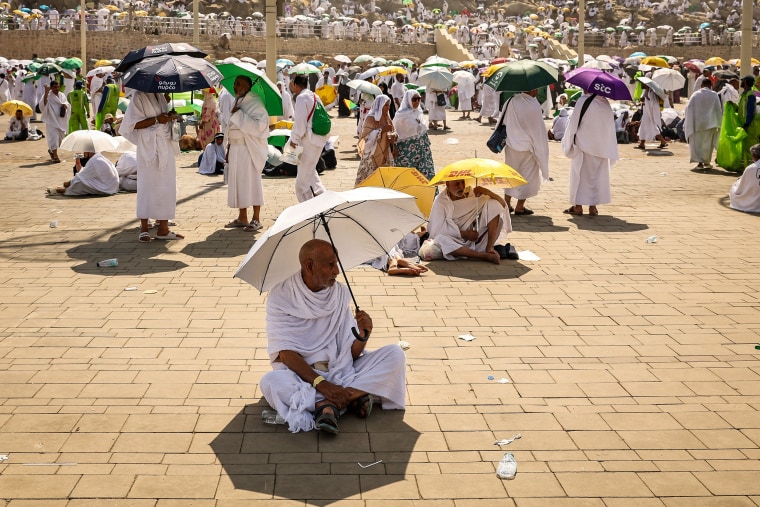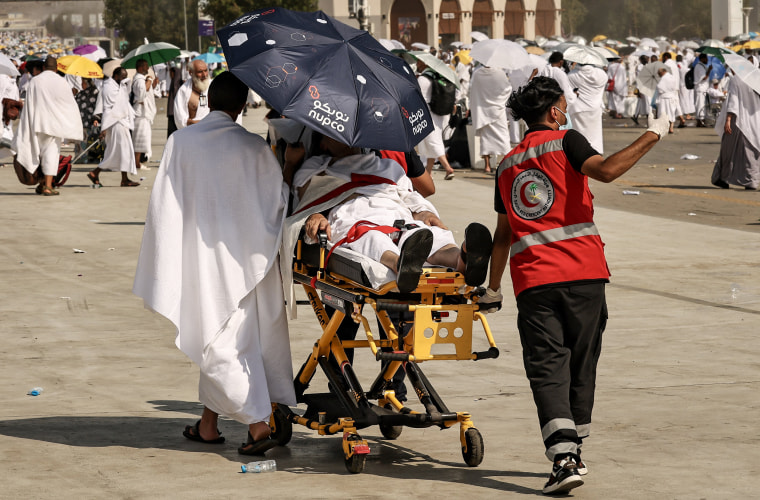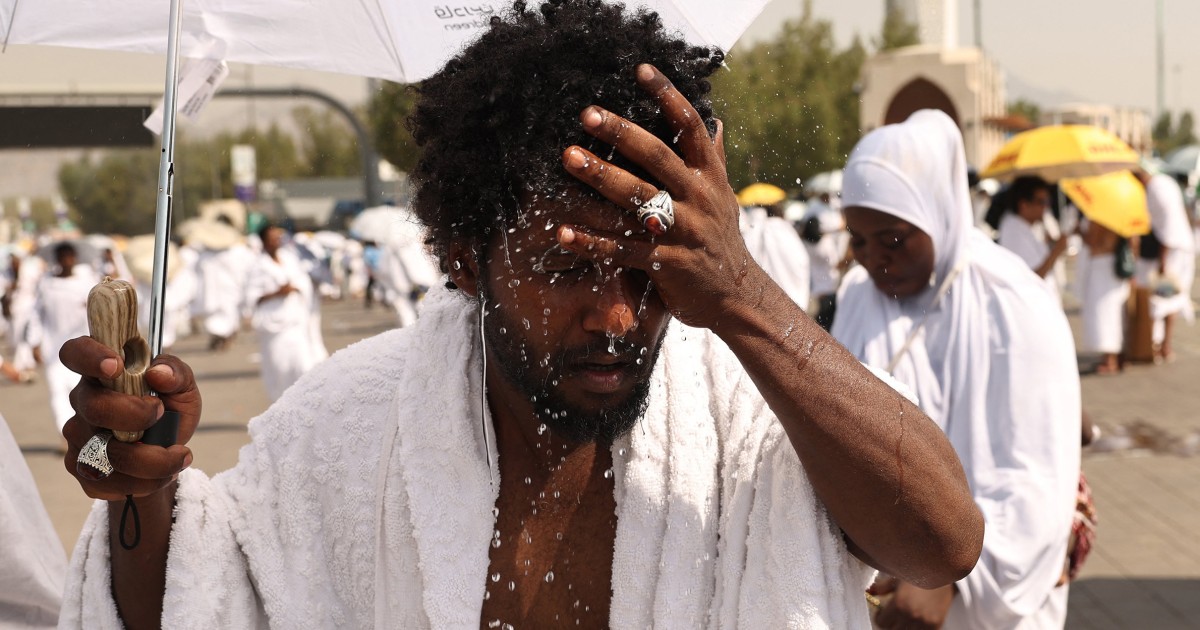Chishti, who traveled alone, said he felt the effects of heat-related illness himself on June 11.
“I was so dizzy I didn’t know what was going on with me,” he said, adding that he still feels some lingering symptoms, including weakness and dizziness.
More than 1.8 million Muslims performed the pilgrimage this year, according to The Associated Press.
Deaths during the Hajj have been reported in past years, though not always as a result of extreme heat. In 2015, a stampede in Mina killed more than 2,400 people, the AP reported. In other years, pilgrims were killed in accidents or disease outbreaks, according to the AP.
This month’s unusually high death toll, however, has increased scrutiny over whether authorities took proper precautions as throngs gathered amid soaring temperatures.
In a statement, Saudi authorities said they had responded quickly and provided “effective support of the Hajj security forces in managing and reducing the effects of heat stress.”
The Ministry of Health said “significant efforts” were taken before the Hajj to “raise awareness on the dangers of heat stress and the importance of preventive measures.”

Saudi authorities also said that health care providers had treated people for heat stress and performed emergency care, including dialysis, cardiac catheterization and open-heart surgeries. More than 30,000 ambulance and 95 air ambulance services were provided, the Ministry of Health said.
Saudi Health Minister Fahd bin Abdurrahman Al-Jalajel said that 83% of the deaths were unauthorized pilgrims who had walked long distances in the heat. Official Hajj permits typically include dorm or hotel accommodations and transportation around Mecca, but many people cannot afford them, which can cost up to $10,000. As a result, scores of unauthorized pilgrims often make their way without the proper visas or registration.
“The health system provided over 465,000 specialized treatment services for free, including 141,000 services to those who didn’t obtain official authorization to perform Hajj,” the Ministry of Health said.
Chishti agreed that unauthorized pilgrims were disproportionately affected by the heat because they did not have official travel arrangements or proper accommodations.
“All hotels and dorms had air conditioners and fans. But those who didn’t have reservations or could not find their allotted hotels were forced to sleep on the streets,” he said. “They didn’t have umbrellas or water bottles. There were some people who arrived themselves without any bookings — they were affected the most.”
Shakoor Hajat, a professor of global environmental health at the London School of Hygiene & Tropical Medicine, said risk mitigation for the Hajj is particularly difficult.
“The Hajj is a unique situation in that pilgrims are often elderly and walking for long periods in very extreme temperatures,” Hajat said.
Extreme heat can be deadly because it affects the body’s ability to regulate its internal temperature. When conditions are too hot and humid, sweat cannot evaporate and the body can no longer cool itself. Heat can also exacerbate pre-existing health conditions, raising the risk of heart attacks, respiratory problems and kidney disease.
Groups at heightened risk include young children, pregnant women and older people.

The recent deaths highlight the difficulties of maintaining some cultural practices and mass gatherings as climate change increases the frequency, intensity and duration of heat waves.
The nature and scale of the Hajj makes it a tough event to manage, even if authorities do their best to prepare, said Milad Haghani, a senior lecturer of urban mobility, public safety and disaster risk at the University of New South Wales in Australia.
“When it’s an entertainment event, we quickly take action to cancel the event,” Haghani said. “But none of these are an option when it comes to the Hajj. It has to be done in a specific location and city, in a very specific time.”
As the intensity of extreme heat increases, Haghani added, Saudi Arabia will need to rethink how to keep people safe during the sacred pilgrimage. Pilgrims will also need to be better informed about the risks.
“The biggest mass gatherings of all times happen in Mecca,” he said, “and there are more Muslims every year going.”
Mithil Aggarwal reported from Hong Kong, Denise Chow from New York and Natasha Lebedeva from Washington, D.C.

